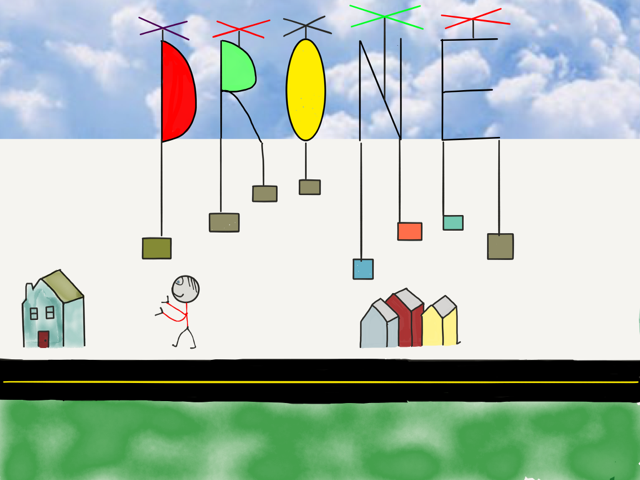Compelling Use Cases for Drones in Today’s Supply Chain
/Although the U.S. Federal Aviation Administration recently announced new rules for commercial drones, there is still not a clear short-term path for mass deliveries of packages via drone. From a regulatory perspective, the most important remaining barriers for autonomous package delivery are:
- Line of sight rule which prohibits drones from flying out of the operator’s sight.
- Drones are not permitted to fly over “non-participants”.
- One operator to one drone.
These barriers, obviously, prevent Amazon, Google, and others from delivering packages at scale via drone. Last week, however, the FAA acknowledged that the rapid pace of technological innovation necessitates that the FAA needs to move faster than the traditional speed of government in developing drone regulations. Andy Pasztor reporting for the Wall Street Journal:
Recognizing the need for quick action, the FAA earlier this year established separate registration requirements for all drone users. Agency leaders also have pledged to craft follow-on rules with unprecedented speed, including some giving the green light to night flights, others approving uses beyond the sight of operators and by year-end, regulations allowing unmanned vehicles to start flying over crowds.
The future, however, is already here for some specific use cases in today’s supply chain. These are use cases where drones provide a substantial improvement over the alternative.
Hard to Reach Rural
Drones currently provide the most value to areas that have either poor infrastructure, such as rural Africa, or have geographic constraints, such as mountain communities that prevent efficient cargo delivery. In rural America or rural Europe, drones could speed up package delivery, take costs out of the logistics network, and improve service levels. This is all great, but not exactly life-changing. In rural Africa, however, a drone delivery network has the potential to become a transformative technology that could help pull people out of extreme poverty and speed up economic development.
It is estimated that worldwide one billion people lack access to all-season roads, preventing them from receiving medicine or critical goods in a timely manner and also preventing them from participating in the global economy. Matternet, a company whose mission is to create a transportation network for matter, is attempting to tackle this problem.
Matternet’s transportation network is comprised of drones that can carry a 2 kg payload and travel 10 Kms in 15 minutes. Automated ground stations can swap and recharge batteries, load and unload cargo, and a routing system matches supply with demand and keeps the drones flying autonomously along optimal routes. Ground stations are located about 10 Km apart and connect villages to allow for a drone relay-type system that covers a large area.
A hypothetical rural drone delivery scenario.
According to Matternet, the cost to transport 2 Kgs over 10 Km is only $0.24 and the ground station investment is a fraction of the cost of building road infrastructure. Connecting villages through drone delivery networks could enable their participation in the global economy and provide more frequent supply of critical goods. This would, in turn, speed up economic development, as a drone delivery network obviates the time-consuming and expensive effort of developing road infrastructure.
Another example is Chinese retailer JD.com, which uses drones to deliver packages to rural areas in the northern Jiangsu province. The drones can deliver up to 15 Kilograms each, fly up to 10 kilometers, and manage up to 200 packages per day, as well as load and unload packages autonomously. Packages are not delivered directly to consumers, instead packages are delivered to local village delivery agents who manage the final package delivery.
With roughly 600 million rural Chinese whose wages are rising and who are gaining greater access to the internet, China holds budding promise for eCommerce. Until recently, rural consumers were vastly under-served by eCommerce companies due to a logistics infrastructure that was too difficult and expensive to properly service. Drones could change that and become an important piece of the logistics infrastructure in rural China.
Mega-Cities
A mega-city is a city with a population above 10 million people. Mega-cities have a road infrastructure that can not keep pace with a growing population and transport is a big problem for anyone who needs to move about. Mega-cities simply weren't designed with modern transport in mind. Congested roads are not just a mega-city problem; according to a report from the Texas Transportation Institute, Americans spent 6.9 billion hours stuck in traffic, which is up substantially over the past 30 years. Traffic congestion is an annoyance for most but a major problem when life-saving drugs, critical supplies, or organs need to be transported urgently.
Dronlife, a finalist in the drones for good competition, has developed a drone capable of transporting organs in single-use plastic containers at a maximum speed of 90 km/h. The drone is designed to carry organs and lab materials from hospital to hospital, all while keeping its cargo cool. Imagine a scenario where a vital organ needs to be transferred from one hospital to another and traffic looks like this:
Source: iStockphoto
Organ transplants are a race; an organ needs to be transplanted within a few hours and drones provide a compelling alternative; faster than road transport and more cost effective and scalable than helicopters. A medical transport drone could transform healthcare in overcrowded cities.
Asset Tracking
Though not a delivery scenario, tracking assets is a key component of any supply chain. PINC Air, the self-dubbed supply chain drone company, has developed drones to keep track of hard to reach assets - such as identifying trailers in a yard, identifying automobiles in a crowded vehicle stockyard, and for cycle counting inventory in warehouses. Cycle counting is the most challenging use case but makes sense because warehouses are controlled environments with a built-in navigation system as warehouse racking is uniformly spaced vertically and horizontally. As has been reported in Reuter’s, Walmart is six to nine months away from using drones to cycle count inventory:
The remotely controlled drone captured 30 frames per second of products on aisles and alerted the user when product ran out or was incorrectly stocked. Natarajan said drones can reduce the labor intensive process of checking stocks around the warehouse to one day. It currently takes a month to finish manually.
Existing comprehensive cycle counting programs are expensive and still will not result in perfect inventory accuracy; If Walmart’s test of the program proves successful, it could save the company millions.
Conclusion
While drones clearly have the potential to significantly improve delivery times and costs in the long run, the focus for now should be on urgent, lightweight shipments. Important stuff where there is no better alternative. Over time the technology will mature, safety will improve, and sensible regulations can be enacted. Public acceptance of drones is not exactly great at the moment, because many people are simply not comfortable with drones. Companies that have an interest in drones for the commercial sector need to take the lead in shifting the public perception of drones away from hackable, privacy-invasive, killing machines to something a bit more altruistic like making people’s lives better by supplying critical supplies and life-saving drugs. Put less focus on pizza deliveries and more focus on life-saving applications and the public's perception can be swayed, which will help pave the way to acceptance for drone package deliveries.
I cover forward-looking topics that are relevant for everyone interested in the future of logistics. You can read more articles here or sign-up for a free monthly newsletter here.














